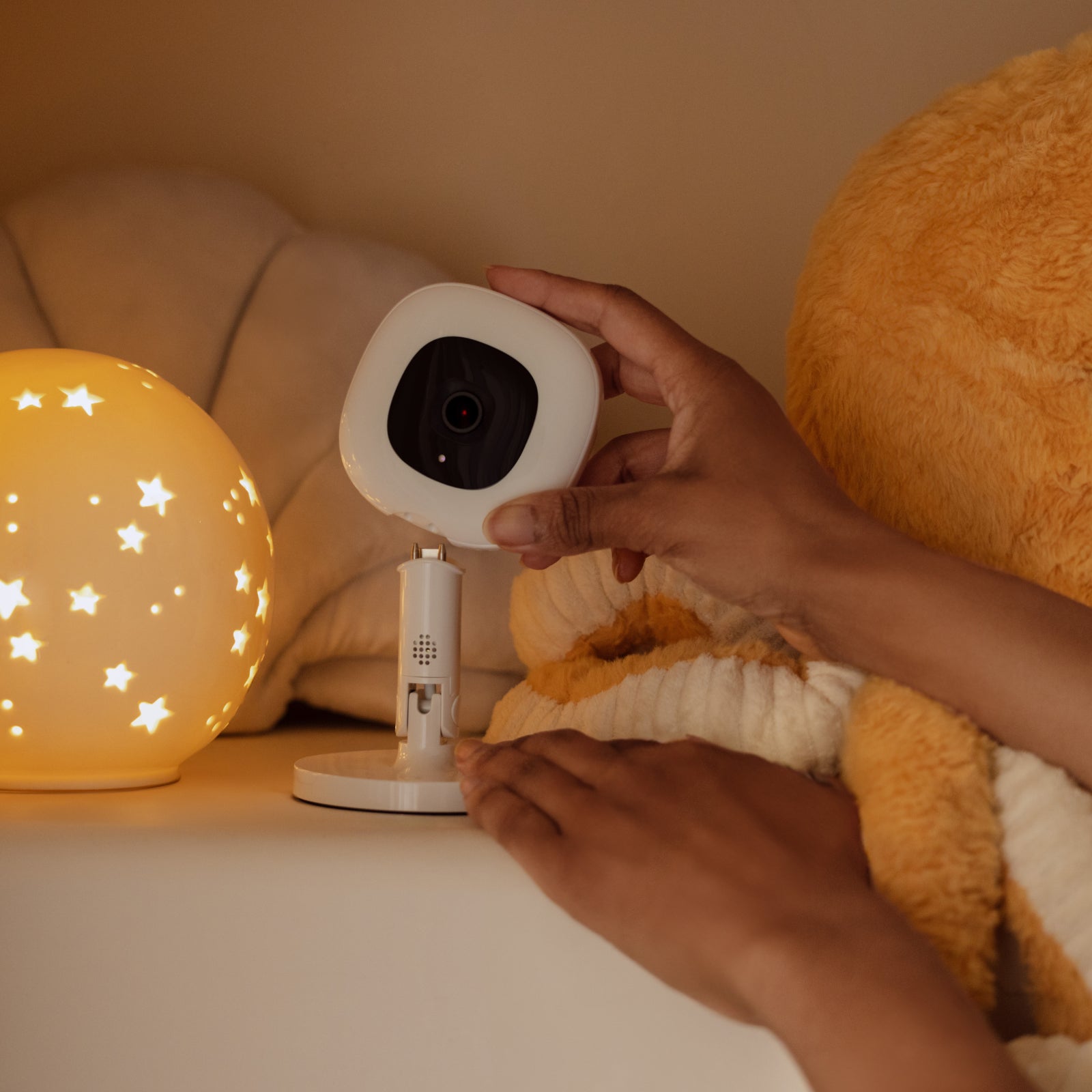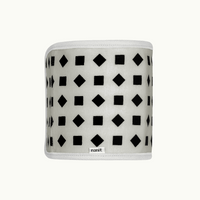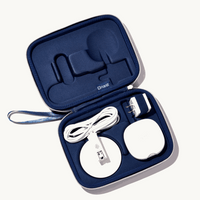If you're reading this at 2 AM while your 3-month-old is wide awake, don't worry—you're not alone. After three months of broken sleep, endless feeding cycles, and questioning everything you thought you knew about babies, you're probably feeling emotionally and physically drained. But guess what? You've made it to a pivotal moment: The 3-month mark is when your baby's sleep patterns are beginning to mature, their circadian rhythms are finally developing, and longer stretches of sleep are truly on the horizon.
Every baby's unique, but knowing more about what to expect at this age can help you feel more confident as you figure out a schedule that works for your family. Whether you're dealing with short naps, frequent night wakings, or trying to establish a routine, read on for everything you need to know about 3-month-old sleep schedules.
What Sleep Looks Like at 3 Months Old
At 3 months old, your baby's changing fast—and these developmental changes can directly impact their sleep. This is when many babies can tell the difference between day and night. Also, their nervous system is maturing, which means they're becoming more aware of the world around them and more capable of longer sleep periods. Yup, that's light at the end of the tunnel.
Most 3-month-old babies need about 14-16 hours of sleep in a 24-hour period, usually divided between 10-12 hours at night and 4-6 hours spread out over naps during the day. But remember, these are just averages. Your baby might need slightly more or less sleep, and that's normal.
By now, many babies can sleep for longer stretches at night, sometimes up to 5-6 hours at a time. Around this time, it's common for babies to go 6-8 hours without a feeding, depending on their growth and eating habits. You can learn more in our guide on when babies start to sleep through the night.
Understanding Wake Windows & Sleep Patterns
Wake windows are just the times your baby is awake between naps and bedtime. Getting these right can be key to helping your baby sleep well. At 3 months old, your baby will typically stay awake for 1-2 hours at a time, and gradually longer as the day goes on.
Here's what typical wake windows might look like for a 3-month-old:
-
First wake window (morning): 1-1.5 hours
-
Second wake window: 1.5 hours
-
Third wake window: 1.5-2 hours
-
Fourth wake window: 1.5-2 hours
-
Final wake window (before bedtime): 1.5-2 hours
During these wake windows, your baby will be alert and ready for feeding, diaper changes, and gentle play. Watch for sleepy cues like yawning, rubbing eyes, or fussiness—these are signals that it's time to help them wind down for their next nap.
Understanding Your Baby's Sleep Patterns with Nanit Pro
Sometimes it’s hard to know what’s working and what needs adjusting. The Nanit Pro Smart Baby Monitor offers advanced sleep tracking that helps you see your baby’s sleep cycles, duration, and quality—all from your phone. Knowing these patterns can make it easier to find the right wake windows and routines for your little one.
Sample Sleep Schedules You Can Try
Here are two common schedule patterns for 3-month-old babies—use these as a starting point, not a rule book. Don't forget that every baby is different, and you know yours best! Your baby might naturally fall into a slightly different pattern, and that's okay. The key is consistency and watching their cues.
Option 1 - 7:00 AM wake-up
|
Time |
Activity |
Notes |
|
7:00 AM |
Wake up and feed |
Start the day with feeding and diaper change |
|
8:00-8:30 AM |
Morning nap |
45-90 minutes |
|
10:00 AM |
Feed and play |
Gentle tummy time and interaction |
|
11:30 AM-1:00 PM |
Midday nap |
45-90 minutes |
|
1:00 PM |
Feed and play |
Active play |
|
2:30-3:30 PM |
Afternoon nap |
45-90 minutes |
|
4:00 PM |
Feed and play |
Quiet activities |
|
5:30-6:15 PM |
Catnap |
Short 15-45 minute nap |
|
7:00 PM |
Bedtime routine |
Bath, feed, and wind-down |
|
8:00 PM |
Bedtime |
Lights out |
Option 2 - 8:00 AM wake-up
|
Time |
Activity |
Notes |
|
8:00 AM |
Wake up and feed |
Start the day with feeding and diaper change |
|
9:15-10:30 AM |
Morning nap |
45-90 minutes |
|
11:00 AM |
Feed and play |
Gentle tummy time and interaction |
|
12:30-2:00 PM |
Midday nap |
45-90 minutes |
|
2:00 PM |
Feed and play |
Active play |
|
3:30-4:30 PM |
Afternoon nap |
45-90 minutes |
|
5:00 PM |
Feed and play |
Quiet activities |
|
6:30-7:15 PM |
Catnap |
Short 15-45 minute nap |
|
8:00 PM |
Bedtime routine |
Bath, feed, and wind-down |
|
9:00 PM |
Bedtime |
Lights out |
How to Handle Common Sleep Struggles
1 - Short Naps
Many 3-month-olds wake up after just 30-45 minutes, sometimes due to their developing sleep cycles and because they're cycling between light and deep sleep phases.
Try this:
-
Improve your baby's sleep environment with blackout curtains and white noise
-
If they stir, gently soothe to try to help them drift back to sleep
-
Check whether your baby is overtired or not tired enough before naps
-
Practice putting your baby down drowsy but awake to help them learn to self-soothe
Sweet Dreams with Nanit Sound + Light
We don't have to tell you that sometimes getting your little one to settle down isn't as easy as turning off the lights. That's where our Sound + Light machine comes in. It's like your baby's personal sleep buddy, soothing sounds can help your baby fall asleep faster and stay asleep longer.
2 - Frequent Night Wakings
While some night wakings are normal at 3 months, it can be exhausting for the whole family. This often happens when babies are still learning to link their sleep cycles or because of developmental changes like a growth spurt.
Try this:
-
Establish a consistent bedtime routine to help your baby learn it's time for sleep
-
Avoid rushing in immediately when your baby stirs—give them a few minutes to see if they can settle back down
-
Check if hunger might be causing them to wake up and adjust feeding schedules if needed
-
Keep interactions at night quiet and calm to help your baby learn that nighttime is for sleeping
3 - Trouble Falling Asleep
As babies at this stage become more aware of their surroundings, they may resist sleep if they're overtired or overstimulated.
Try this:
-
Pay close attention to wake windows and sleepy cues
-
Create a calming pre-sleep routine that's consistent for both naps and bedtime
-
Keep their sleep environment dark, cool, and comfortable
-
Consider swaddling or using a sleep sack for comfort and security
Cheat Sheet: Quick Tips For Better Sleep
1. Stick to a Routine
Consistency is key when it comes to helping your 3-month-old develop healthy sleep habits. This doesn't mean you need to follow a rigid schedule to the minute, but having predictable patterns helps your baby's body clock develop. You can learn more newborn sleep tips here.
2. Watch for Sleep Cues
Early sleepy cues include yawning, decreased activity, and staring off into space. Later cues include rubbing eyes, fussiness, and crying. Aim to start your sleep routine when you notice early cues.
3. Set up their Sleep Environment
Where your baby sleeps can play a significant role in sleep quality. The room should be dark, cool (around 68-72°F), and quiet. Blackout curtains or a white noise machine could be a gamechanger.
4. Practice Safe Sleep
Always follow safe sleep guidelines: Place your baby on their back to sleep, use a firm mattress, and keep the crib free of loose bedding, toys, or bumpers. If you're transitioning from swaddling, consider using a sleep sack for warmth and comfort.
Breathe Easy with Nanit Breathing Wear
Our Breathing Wear collection works together with the Nanit Pro Camera to help you monitor your baby's breathing motion while keeping them warm and safe. Whether it’s a sleep sack or a swaddle, Breathing Wear keeps things cozy for them and stress-free for you.
5. Be Patient
Sleep isn't always predictable: What works one week might not work the next, and that's normal. Be prepared to adjust as needed while maintaining consistency in your overall routine.
Preparing for What's Next
As your baby approaches 4 months, you may notice some changes in their sleep patterns, which is completely normal. This is often referred to as the 4-month sleep regression, even though it's actually more of a progression as your baby's sleep patterns mature. Our guide on the 4-month sleep regression can help you understand and prepare for these changes.
During this transition, maintain the healthy sleep habits you've already established—the routines and environment you create now will serve as the foundation for better sleep as your baby grows.
Track Sleep Milestones with the Nanit App
With a Nanit Insights Membership, you gain access to detailed sleep analytics that'll help you understand your baby's sleep patterns and track progress over time. Get personalized tips, developmental insights, and more delivered right to your phone.
The Takeaway
Building a healthy sleep schedule for your 3-month-old takes time, patience, and consistency. Remember that every baby is different: Trust your instincts and stay flexible as your baby grows.
This is an exciting time in your baby's development, and you can help set the stage for healthy sleep habits that'll lead to more restful nights for your whole family. Sweet dreams are ahead—for both you and your little one.
Contributors
Natalie Barnett, PhD serves as VP of Clinical Research at Nanit. Natalie initiated sleep research collaborations at Nanit and in her current role, Natalie oversees collaborations with researchers at hospitals and universities around the world who use the Nanit camera to better understand pediatric sleep and leads the internal sleep and development research programs at Nanit. Natalie holds a Ph.D. in Genetics from the University of New England in Australia and a Postgraduate Certificate in Pediatric Sleep Science from the University of Western Australia. Natalie was an Assistant Professor in the Neurogenetics Unit at NYU School of Medicine prior to joining Nanit. Natalie is also the voice of Nanit's science-backed, personalized sleep tips delivered to users throughout their baby's first few years.
At Nanit, we know there’s no shortage of parenting advice out there—some great, some… not so much. That’s why our blog articles cut through the noise with tips you can trust, so you can spend less time Googling at 2 a.m. and more time enjoying your little one.
Our articles are written by experienced parenting pros, backed by solid research, and reviewed by our in-house experts. Plus, our wellness-related content also gets a stamp of approval from Nanit Lab—our think tank of scientists, engineers, doctors, and other very smart people. Our goal? To bring you current, trustworthy, and actionable info that helps you make confident, informed decisions for your family.












































